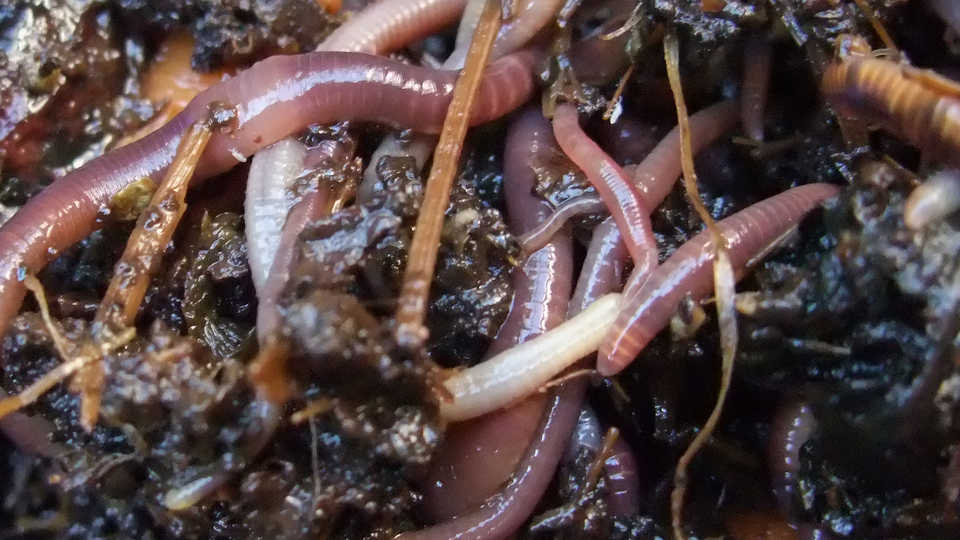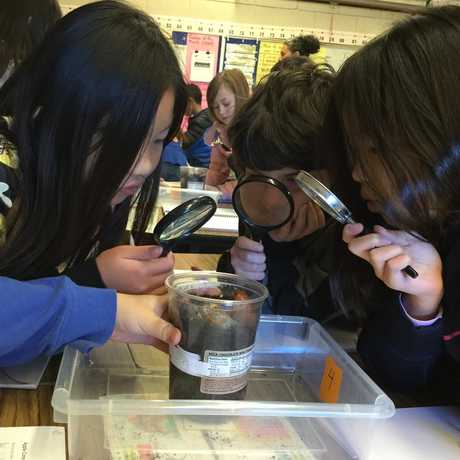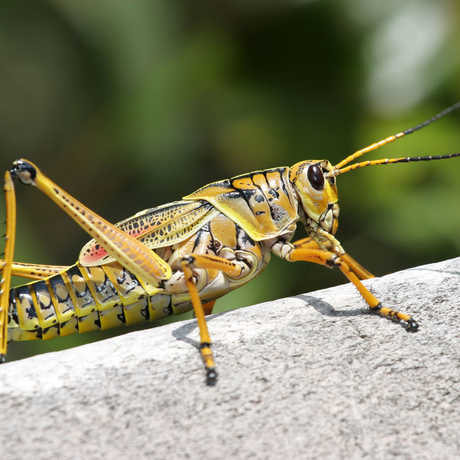After the Manor has had about 2 weeks to establish, you and your students may find some new macroinvertebrates! Follow these tips to make the most of your visits to the Manor.
Macroinvertebrate Manners:
- Students must care for their macroinvertebrates and try to not harm or kill them while studying them.
- Remember to remove logs and stones carefully to protect the creatures underneath.
- Try not to disturb them too frequently; maintaining and studying the manor once a week is ideal.
- Keep the soil moist and area clear of trash.
- To keep students safe, provide a bug box to put macroinvertebrates in for observation. Small jars with lids make fantastic bug boxes. Remember to return the macroinvertebrates to the manor or they will not survive.
- Use a utensil such as a shovel or stick when raising the rocks and wood for observation to protect students from dangers such as stinging insects.
- Paint brushes make great barriers for students who do not want to touch the macroinvertebrates. The bristles are gentle enough to push macroinvertebrates around and into bug boxes without hurting the creatures.
Catch a creature in a Potato Trap
- Cut a large potato in half lengthwise, scoop out some of the inside of the potato with a spoon, and close the potato.
- With a knife, bore a hole in one side of the potato to let macroinvertebrates enter.
- Bury the potato trap about a half inch deep in the Bare Soil area of your Macroinvertebrate Manor and leave it alone for several days.
- Lift the top half of the potato out of the soil and observe and record the macroinvertebrates found. Students may collect the animals found in a clear container for closer observation. After observation, return the trap lid (and its residents) to the soil.
Who likes the Wet?
- Take either a stack of 5 or more layers of fabric, a carpet tile, or carpet off-cut and soak thoroughly with water.
- Place the fabric on the ground in a cool, shady area of your Macroinvertebrate Manor, and put stones on the corners of the fabric to keep it in place. Keep it moist for 3 days.
- In the morning, lift it up to discover what is hiding. Use bug boxes and magnifying glasses to more closely examine the residents. After observation, replace it on the ground.
Check the Manor Regularly:
Observe each of the manor’s spaces to see the biodiversity of macroinvertebrates in each environment. Keep a record of all the macroinvertebrates, including what type and in which environment they were found in a journal or chart. These records will help you decide if you have a new inhabitant.
Grade 3: Have the students keep track of the date and which macroinvertebrates they notice in the manor in their science notebooks. Weather can be a factor in who you find, so encourage students to keep notes about that too. It may be easier to have different groups focus on different sections of the manor.
Grade 5: In order to better understand the movement of matter in the manor, have the students try to figure out why type of macroinvertebrates they have using a field guide. Students can do research to determine if their macroinvertebrates are predators, decomposers, or herbivores. They can then work to determine which way the matter in the macroinvertebrate manor is moving. To simplify things, try assigning different sections of the manor to different groups.



